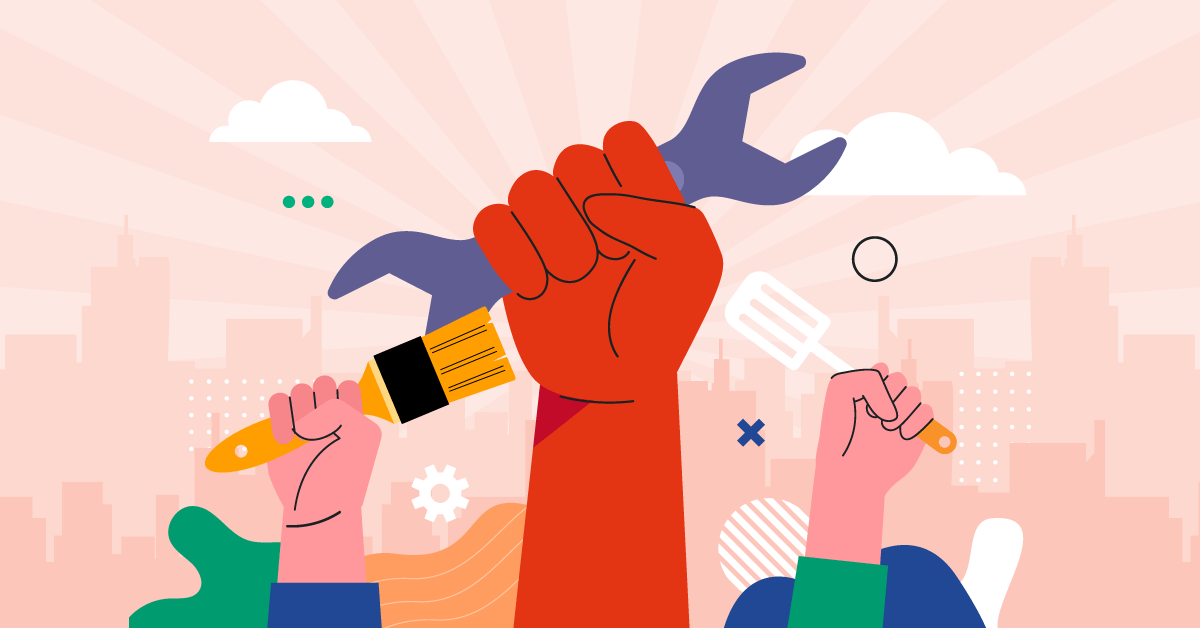How do you pick the most appropriate DEI training topics, though?
Hosting one presentation on what diversity is, won’t cut it. What you need is a well-planned training program that will make a true impact. So, the question here is, how do you start implementing it?
Why diversity programs are set to fail
Building a diversity training program is a great initiative. But it doesn’t guarantee you’ll get the results you aim for as there are certain pitfalls you need to keep in mind —and avoid.
Let’s see the main reasons why diversity training programs might fail.
- Making it a one-off initiative: Diversity efforts should be well-structured, planned, and executed carefully. As mentioned earlier, it doesn’t suffice hosting one diversity awareness presentation and leave it as is. Your employees might get the right information, but won’t be able to retain it or put it into practice. It’s different to just know than to know and act upon the information you have collected.
- Keeping it too generic or basic: Simply going over the definitions of diversion, equity, and inclusion won’t hit the spot. Definitions are a great way to start, especially if people are not familiar with the terms. But if your diversity training stars and ends with definitions, you’re only scratching the surface. What you need is go over the definitions first, but then make sure you give your people all the additional resources and information to put their knowledge into practice.
- Not connecting it to the work life: DEI in everyday life is different than DEI at work. While awareness around the issue is always a great place to start, DEI employee training should be focused around work life and how the workplace can become better through collected efforts.
- Not customizing based on roles and needs: How you approach DEI differs based on employees’ roles and needs. For example, team managers don’t only need an overview of DEI in the workplace, but it’s necessary to have additional training on hiring bias. Or your sales teams might need specific training on how to communicate with people coming from different backgrounds, generations, and cultures.
- Not communicating its importance: Imagine just throwing a DEI training session to your teams without taking the time to explain why it’s necessary first. People won’t be engaged and are more likely not to retain the knowledge shared. But if you spend some time and effort into letting them know why it’s necessary for their role and the whole organization can help them focus and dedicate their time into DEI training.
Which DEI training topics you should select
Luckily, you can avoid the above-mentioned pitfalls by selecting the right DEI training topics and turning training from something vague to an important guideline for the day-to-day at work. Let’s explore which DEI training topics you should include in your strategy and make it a success.
1. Exploring the differences between diversity and inclusion
Diversity can be easily understood by most people without further explanation. But inclusion and the concept around it needs to be broken down.
Diversity is about having people from different backgrounds, cultures, or generations on the same team, whereas inclusion means giving those people a voice, providing them with equal opportunities.
For example, you can build a diverse team by hiring more female employees, but your team won’t be inclusive if you don’t involve those female employees in decision-making processes or don’t help them advance their careers the way you do with their male counterparts.
2. Understanding the concept of unconscious bias
Another buzzword in DEI training is unconscious bias. It’s also known as hidden bias, and it can be one of the major challenges employees face when it comes to diversion, equity, and inclusion in the workplace.
People sometimes, usually unintentionally, make assumptions about others based on stereotypes like gender, race, ethnicity, age, disability, sexual orientation, and more. This is what unconscious bias is all about.
Unconscious bias can cause trouble among your people in the workplace, but most importantly, it can affect the hiring process. Sometimes hiring managers jump into conclusions about prospective employees that could be the right fit for your organization. Or leaders might not give equal opportunity to minorities in the workplace, thus creating unfair opportunities for promotion.

3. Recognizing microaggressions
Day-to-day verbal or nonverbal insults or snubs that express hostility towards people in the workplace are microaggressions. These might also be intentional or unintentional and can be directed toward marginalized groups or not.
Interrupting women during meetings, assuming someone’s sexual preferences based on the way they dress and gossiping about it, thinking that a person of color is poor, uneducated, or immigrant, and commenting on these, gossiping, or throwing looks are all examples of microaggressions. These can be particularly toxic to the work environment and might lead to burnout, health issues, and overall negativity among teams.
As such, it’s necessary to include microaggression awareness among your DEI training topics so that your employees can recognize what microaggression is, and how to act and handle such instances, regardless of whether they’re witnessing or receiving them.
4. Preventing workplace discrimination and harassment
Including workplace discrimination and harassment topics in your DEI training program creates a chance for organizations to improve their culture and policy. And this is possible as your people will be able to recognize faulty behaviors, speak up, and report if needed.
Harassment behaviors happen regardless of gender or race. They occur mostly due to differences in opinion or personal viewpoints. As they can happen because of disrespect to diversity policies, they can be eliminated by reinforcing diversity and spreading awareness on the matter.
5. Focusing on intentional inclusion
Wanting to be inclusive is one thing. But knowing how to do so is totally different. Sometimes people can be overexcited about being inclusive and might overdo it. Thus, it’s essential to assist your teams in following DEI best practices.
For example, a manager might continuously assign important tasks to women, or people from different cultural backgrounds, only because they are considered minority groups. The manager has good intentions, but the criteria for choosing which person is suitable for executing the task are biased due to forcefully implementing inclusive practices.
Teaching employees, leadership, and management how they can purposefully practice inclusion is necessary. DEI content could include how to use the correct pronouns, and speak with inclusive language, recognize and use privilege to support others without crossing the line. Only then will your people be ready to foster and support a truly diverse culture.
What comes after DEI training?
So, after you’ve decided on the DEI training topics you should invest in, it’s all about selecting the proper people and content to roll out your training program. But it’s essential to have a post-training plan in place, too.
This means evaluating whether your lessons have fulfilled their purpose and applied, making it clear to employees where and how to address any follow-up questions they may have, and conducting training feedback sessions to adjust training to your organization’s needs.



